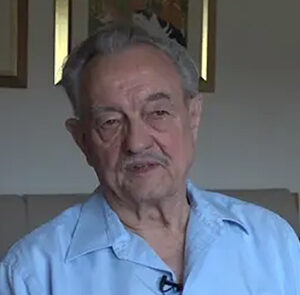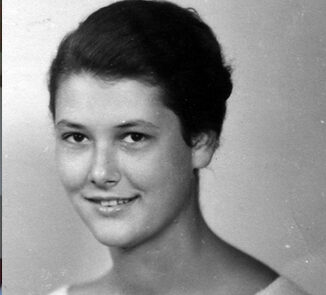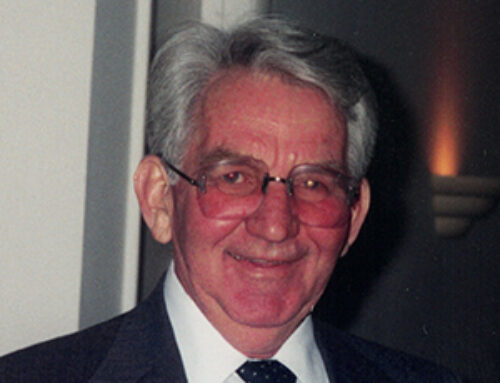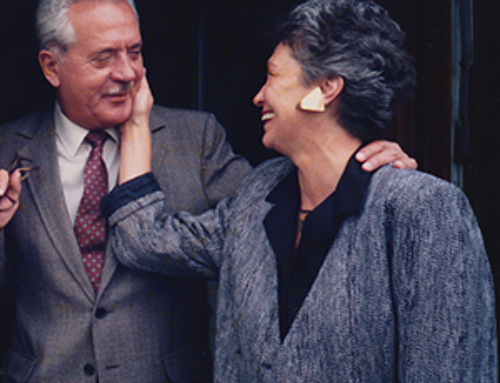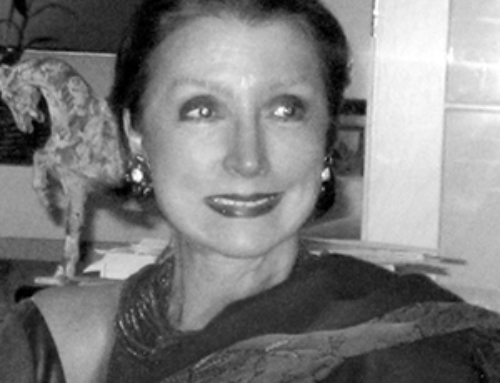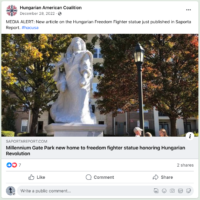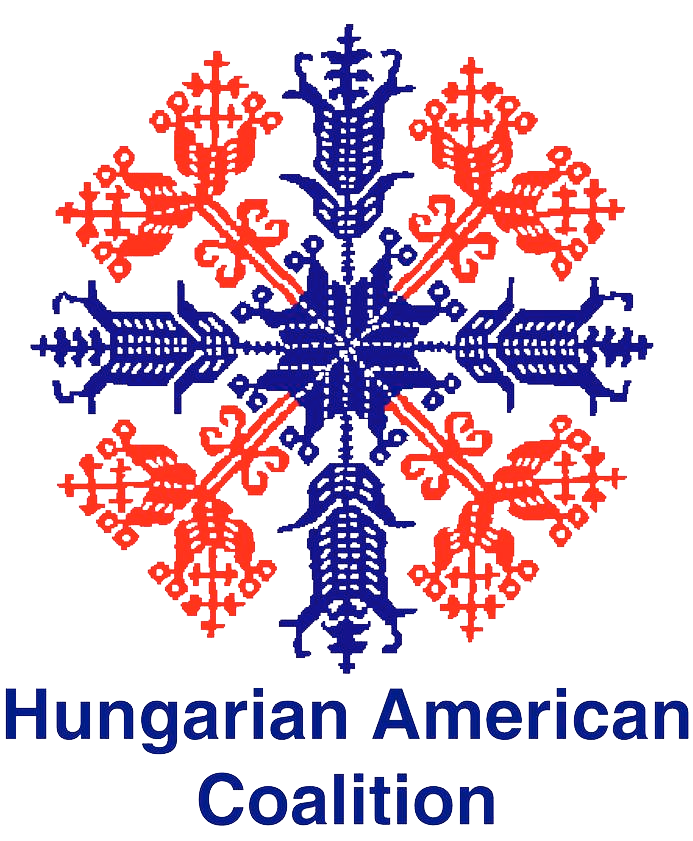László * and Ágnes Fülöp *
László Fülöp was born Fülöp László György Andor on November 13, 1934 in Tiszakécske, Hungary, one of four children. His father was a lawyer and politician and his mother was the mayor’s (főjegyző) daughter. In 1941, the entire family moved to Máramarossziget, a small Hungarian city in Transylvania that was returned to Hungary (after being part of Romania after 1918) during WWII. He was appointed the head of the local courts (Törvényszéki Bíró) and the family lived there until the end of WWII. László has many memories from that period, some of which are painful, but many that he is proud of (including his father’s work in saving a number of local Jews from deportation). After WWII, some of those Jews whom he helped save helped him return with his family safely to Hungary to Szentendre where he was offered a job also in the judicial system. László went to high school in Szentendre, but he was not admitted to the university because his father was detained in 1952 for alleged crimes against the democratic people’s republic.
László’s father was held for 7 months and then placed 300 km away from his family in Kisvarda. László first worked in a coal mine, and then he was drafted into the army as a labor-force soldier (munkaszolgálat) with no weapons training in 1954. After his time in the military, he began working in a textile factory up until the 1956 revolution. László was involved in the revolution from the first protests until the end and has vivid and compelling stories about all that he witnessed. He was not an armed resister but helped to build barricades and assisted the wounded. Because he was in love with a young Hungarian girl, he didn’t leave Hungary until early January, 1957. He then fled to Austria and from there was reunited with his older sister and younger brother (they left earlier in November) in Minnesota. There he was given a job by an architectural firm belonging to a distant cousin of Admiral Horthy and could, at the same time, attend university to obtain his architectural degree. He married in Minnesota and had three children with his first wife. He worked for nearly four decades as an architect and professor of architecture and was also heavily involved in the Society of Minnesota Hungarians (Minnesota Magyarok Egyesülete). He is also the Vice President of the Hungarian American Coalition. Since his retirement he has written 4 books. They include poetry as well as the book “From the Danube to the Mississippi” about his years living as a Hungarian emigré in the U.S. (Biography from Memory Project)
AGNES FULOP
Born and raised in Budapest, Ágnes Fülöp was in high school in 1956. She spent the aftermath of the Revolution living under the Kádár regime, raising two children. She immigrated to Minneapolis, Minnesota in 1989, following her marriage to László Fülöp. She worked as a researcher in the geological laboratory of the Department of Agriculture at the University of Minnesota. An active leader in the Minnesota Hungarians since 1990, Fülöp served as President from 1998-2007. With her husband she is also a member of the Hungarian Community of Friends (MBK) and the Hungarian American Coalition (HAC).
Ágnes Sylvester Fülöp – A Student’s Memories of the Hungarian Revolution
It was a regular school day with a regular class schedule for Tuesday. As I did at the beginning of my schooldays, I wrote the date on my notebook. It was October 23.
In the morning my Mother talked about my upcoming birthday party. So, going home from school in the afternoon, I was thinking about inviting my girlfriends to the celebration. In school I belonged to a study group that stayed there longer every afternoon; it was 4 p.m. when I left for home. My school was on Isabella Street on the Pest side and I lived on the Buda side of the city close to the Déli Train Station. Traveling home on the Ring Boulevard everything seemed to be the same as it was every day. The streetcar – everybody called it “the #6” – was crowded as usual, although there seemed to be more pedestrians walking on the sidewalks.
When the streetcar reached the Nyugati Train Station, the traffic came to a halt. Here people were walking toward the Danube and the Margit Bridge not only on the sidewalks, but in the traffic lanes as well. Excitement filled the air. I got off the streetcar and walked with the crowd. When we arrived to the corner of the famous Budapest theater, the “Vígszinház,” it became obvious that it was impossible to get across the Margit Bridge to Buda. Thousands of people marched from rail to rail on the bridge toward us. They were singing Kossuth songs, from the 1848 Hungarian Revolution and Freedom Fight. Hungarian flags were floating in the wind, above the crowd. “We are coming from the memorial statue of Bem,” they shouted. Joseph Bem was a famed and well-respected Polish general who had volunteered to fight on the Hungarian side in the 1848-49 uprising.
The huge crowd moved slowly on St. Stephen Boulevard, sometimes stopping and waiting patiently to join other waves of people coming from Buda. Windows opened on adjacent buildings; they were filled with waving hands, singing and smiling faces. On one of the balconies little kids and their kindergarten teachers waved their small Hungarian paper flags to the crowd. “Vivat, Vivat,” people shouted back to them. They laughed happily, sang, clapped and all faces were lit up by smiles. Oh God, what was happening? I totally forgot my birthday plans.
As a 15-year old, I was not interested in politics. I just couldn’t understand the many strange and unfair turns of the communist rules and regulations in our daily lives. My parents’ grave warnings to be very careful what we talked about outside of our home became ingrained in us kids. In those years people were jailed by the government if they were accused by anyone as an enemy of the communist party and the government.
But here it was something absolutely different happening: a great and surprising event and the air of free expression after many terrifying years of terror. Something unbelievably beautiful…! And I witnessed this fantastic day!
At the Parliament
The shoulder-to-shoulder crowd simply absorbed and carried me into the side streets, toward the Parliament Building. I marched along with them as we talked, sang and shared the happy moments and liberated feelings.
Sunset painted the Fisherman’s Bastion and the Matthias Church a magic, glittering red color. The streetlights lit up as a series of pearls on the sidewalks. The huge five point red star dominated the top of the Parliament Building. Finally, the many thousands of demonstrators stopped on the Kossuth Square at the Parliament. I was relatively close to one of the lion statues guarding the entrance. The excited, singing and peaceful crowd was just growing, filling up the entire plaza and extending into the adjacent streets everywhere. Someone cried out and began chanting: “Turn off the light of the red star, save some electricity!” The crowd picked up the slogan and loudly repeated it. More and more slogans came up that everybody shouted in rhymes. Another voice emerged: “Confiscated Church-properties should be given back to all Churches!” People turned back right away in disagreement: “This is not the time for this, first we want freedom! Russians go home!” There were several speeches given from the balcony of the Parliament by well-known politicians and student leaders of the demonstration. Actors recited the National Anthem written by Ferenc Kölcsey as a poem, and other rousing, beautiful poems about freedom by Sándor Petõfi.
A young college man touched my arm gently. “You don’t have a rosette (kokárda) yet,” he said and pinned a tiny tricolor ribbon to my coat collar. He smiled and stepped to the next person. My heart was filled with faith and enthusiasm.
I still have this little piece of red-white-green ribbon that I cherish as one of my great treasures. It has reminded me over the years that I was there in a historic time when Hungarians bravely stood up for their freedom.
When Imre Nagy, a respected politician, stepped out onto the balcony of the Parliament to give a speech, I couldn’t stay any longer. It was late in the evening and I feared my parents would be very worried about me. Slowly, step by step I managed to wiggle out of the thrilled and excited crowd of demonstrators. At this time the simple pontoon bridge named Kossuth Bridge was a functional connection between Buda and Pest. I chose to take this shortcut home, running through narrow little streets up the Castle Hill and down on the other side. My heart was pounding, filled with never-experienced impressions and emotions, and I could hardly wait to share them with my family.
My parents were relieved to hug me because many hours had passed after I’d left school and finally showed up at home. As I learned later, my Father was also on the Kossuth Square, but, of course, it was impossible to meet each other on the huge space filled with hundreds of thousands of people shoulder to shoulder. I told them everything I saw in the afternoon. My parents, my brother and little sister, my 92 year-old Great Grandmother and my Grandmother were listening to my stories. My “grannies” had lived with us after they had been bombed out of their home and lost everything they owned in a carpet bombing of World War II. My Great-Granny, who was completely alert mentally, beamed with happiness when she said: “Oh Lord, thank you for giving me the chance to see freedom again. Maybe I’ll live to see my great grandchildren learning the truth in school, not ridiculous and distorted statements about almost everything, like they called my favorite poet and freedom fighter, Sándor Petõfi a communist! Communism did not even exist at his time.”
Late in the evening we were “hanging on” the radio’s news. We heard the speech of Ernõ Gerõ (first Secretary of the Communist Central Committee) filled with repulsive and outrageous statements. My Father’s eyes were flashing in anger, and in a choked voice he whispered his thoughts to my Mother. A little later, loud noise and shouting was heard from the streets and drew us to the windows facing the Vérmezõ Park and the Moscow Square. On the street we saw a big truck packed with young people holding up a soaring Hungarian flag with a hole in the middle heading in our direction. The despised communist seal was cut out of the flag. The voices got louder, and finally it became comprehendible: “The Stalin statue was toppled! The Stalin Statue has been destroyed!”
Oh my God! It was unbelievable! We were thrilled …They were, of course, referring to the huge statute of Stalin erected in place of a church in the Pest City Park. Newer and newer information spread; everything happened so fast. Like a sharp knife piercing hope the news was relayed that serious shootings happened at the Radio Station. There had been so many unimaginable happenings that day, it was hard to go to sleep.
The next day
It was still dark when we awoke in the early dawn hours to a chilling, roaring, rumbling noise. That spring there had been an earthquake of 5.6 on the Richter scale in Budapest and vicinity. It was very scary. The trembling of the apartment building was similar to that. What was happening this time? We ran to the windows. The roaring, earsplitting noise was increasing. It shook up our stomachs and froze our hearts. In less than a minute we saw: from behind the corner of our building suddenly emerged the first Russian tank followed by the next and a never-ending cue of others. These monsters were creaking and rattling on the cobblestone road as they proceeded, passing our building and moving toward Moscow Square. The top door of each tank was opened and a dark figure rose out of each machine. Fear started flowing into my heart. The peaceful demonstration yesterday, the cheerful mood, songs and hopes of the multitude and our belief in a miracle… seemed to have faded far away in this early hour of threatening, gloomy daybreak. Our fearful eyes couldn’t see the end of the line of those thundering tanks.
On the next day, October 24th, schools were closed. Everybody in my family hurried to stand in line to buy food, just in case, because everything became so uncertain and we wanted to store some groceries. My alert Mother was able to get salami; that wasn’t easy to buy in those days. In fact, this was the first time I ate salami in my life.
Tension was vibrating in the air all day. Everyone sensed that something would happen soon. The news spread about fighting and shootings in different parts of Budapest, especially at the Radio building.
Early that afternoon, the freedom fighters pushed railroad cars from the Déli Railway Station to the street intersection and tore up cobblestones of the road to build a barricade that would stop a new column of tanks. It happened very close by, just a short block from our building. My Uncle, who’d heard about the barricade building, came over and stayed with us to see if we needed help. Later that evening my Father sent us, the children, to a safe room in our apartment, away from the bedroom that faced the street. It was getting dark. Suddenly, we heard the threatening noise of a tank coming toward our building. The tension was increasing to a flashpoint. A series of gunshots came from the barricade. The tank responded, and an enormous detonation shook our flat because the shot hit our building. Then another firing came. Our windows broke and the panes shattered on the floor in a million little pieces. “Everybody hurry, run to the shelter!” cried my Dad. My Uncle hugged my Great Grandmother, lifted up her frail body on his shoulder and ran out of our apartment, down the stairs to the underground area. There was panic on the staircase; yelling and crying residents running down from seven floors. A family with two little children was crawling on their knees out of a huge cloud of dust.
Oh God! The memories of World War II just came back! Huddling in the cellar we could hear the fight above us. Shootings, detonations filled the air. Some people carried a wounded man down to our shelter. It was a Russian soldier who was shot in his lung. He was laid down on a blanket and a couple of people ran for a doctor. The soldier cried out for his Mother. This detested, wounded enemy was the beloved son of someone… somewhere. We, the youngsters, were sent away from this site. My heart sank. I never found out if they could save him.
My Father
On the next day, the 25th, my Father left for work as usual. He was a lawyer at the Ministry of Agriculture. During the early fifties he lost his job because he was labeled a “class-alien” due to his background, and because he declined to become a member of the communist party. In the spring of 1956 he was asked by the Department to come back to work in the same position, because his knowledge and the high-quality work he had done was much needed.
The 25th of October is remembered as “Bloody Thursday.” Again, thousands of people marched to the Parliament and on the Square and were caught between the crossfire of Soviet tanks and the Hungarian Secret Police. The Agriculture Ministry faced Kossuth Plaza and the Parliament Building, enabling him and his colleagues to witness what happened on the square. We had already heard about the horror and the slaughtering of hundreds of innocents on the plaza. I will never forget the scream my Mother gave out as she flew into the arms of my Father very late in the evening on that day, when he finally arrived home exhausted, but alive and safe.
My Father told us how he and many of his colleagues in the department tried to save panicking people, who were desperately running for their lives, pulling them through the first floor windows into the building. He also told us about the communist party secretary of the Department, who was yelling furiously, ordering the Ministry staff to close all windows and doors to keep the rebellious men, women and children out of the building. That would have meant to simply let them be shot to death on the street. Father wept as he told us, how the secret police (ÁVO) hunted people down one by one, under the arcades of the building. He described how horrible it was seeing the piled up bodies of the dead around the Rákóczi statue on the plaza. Words cannot express our feelings…
Days passed and the battles got more serious. We heard reports about additional divisions of the Russian army entering Hungary at our eastern border and advancing upon Budapest. Apparently, the Russian troops that had been stationed for years at Székesfehérvár, at Gyõr, on the Szentendre Island and elsewhere were not enough to crush the Revolution.
November 4
By November 4, the advancement was complete, and they attacked Budapest at dawn. It was a tragic day.
At this time, I was allowed to go out only as far as the nearby grocery store. Although I was not involved in fighting, I learned the names of Pál Maléter, Gergely Pongrátz and Szabó bácsi. People were talking about serious fights on the Pest side at the Corvin Passage and at the Kilián Army Post Building on Üllõi Avenue. Also there was serious street fighting on the Buda side at the Széna Square, and at the Viennese Gate that was an entrance to the historic Castle District. In the following days the Soviets bombed the Kilián Army Post and the Móricz Zsigmond Plaza. One night, when we heard the explosions of bombs and ran to our windows that faced the Vérmezõ Park and the Castle Hill district, we watched in horror as the roof of the National Archives burned. The fire colored the entire horizon red and the flames continued to spread fast. This horrifying scene showed me what nonsensical and mindless waste a war can inflict.
The fighting had grown far more intense. We (the three kids) moved to my other Grandmother’s place, because her home was safer in the back hills of Budapest. Even there we heard bullets being shot over our heads because two fighting groups, freedom fighters on one and Russians on the opposite hill had set up their lines and they were shooting at each other. Later most of us got used to standing in line for bread while the adjacent street was under gunfire. One day, I was standing in line for milk when a Russian tank showed up at the corner. The tank slowly moved closer with a rattling noise, stopped and lowered its cannon aiming, it seemed like, at the people standing on the street. Everybody ran in all directions. A smaller group tried to hide in the store. They pushed me in, too. I was stuck and scared. What would happen if the tank just fired into the store? After a few breathtaking minutes that seemed like hours to me, the monster moved on. The fear remained in my mind for a long time.
What happened to the faith in freedom that filled the people’s hearts just a few days ago? What happened to the powerful will that bonded Hungarians together, from the capital city to little villages, with the great dream of freedom?
Many escaped to avoid the Soviet reoccupation. More than 200,000 men, women, children left the homeland because of fear and to find a better future in the West.
We listened to Radio Free Europe and Voice of America constantly. Hungarians were wishing desperately for help that would come from the West. Many families hoped to get radio messages from loved ones or friends who made it to the “free world.” Often it was hard to understand reports on the radio from the West, because of jamming. Our apartment was still dark because all of the front windows were covered by plywood after we lost the glass of the windows. People in Budapest stayed home in the evenings, for it wasn’t safe to go outside. Rumors spread fast about robberies, attacks, assaults. Who was doing this to us? One late evening a spine-chilling scream of a woman broke up the quiet hours. It came from the street. We became numb with fear. What was happening? Who was in danger? After a while the prolonged, desperate screaming died down, leaving us with a feeling of helplessness and a sense of terror.
My Great-Grandmother
In mid-December, my Great-Grandmother became ill. She lost her dream to see Hungary free from communist and Soviet domination. The first euphoric feelings faded fast and disappeared when it became obvious that the Russian army had crushed our Revolution. The fight for Hungary’s freedom seemed over. My Great Granny had been born in 1864, three years before the Hungarians made the compromise agreement with the Habsburgs following a heroic 1848-49 freedom fight that Austria crushed with the help of the Russian Czar’s army. Granny survived World War I and the 1919 short-lived communist takeover in Hungary. She lost everything during World War II; her home was bombed to the ground. Now she had lost her will to live. She refused to eat and just lay in bed with her prayerbook in her hands. She left this world just two days before her 92nd birthday. There was a rattle of firearms in the distance when we buried her in the cemetery.
When school started again, many of my classmates were missing. They fled the country with their parents or family. We were sad to learn the fate of our favorite gym teacher who was a famous athlete competing in the pentathlon. His athletic figure became part of the design on the back of the 20 Forint bill. He was shot on the street when he went to his Mother’s house to bring her food. For us he was an exceptional coach and teacher, and so young… as young as many boys and girls, the fearless, bravest of the brave, who perished.
The regular classes started again at the end of January. A strange silence surrounded the turbulence of the preceding few months. But that year instead of the required Russian language, we started studying German. That stopped again with the school year, and we resumed studying the Russian language the next September. People talked about the revenge of the government, arrests, prisons and concentration camps, even executions of young rebels. We were gripped by an insecure and fearful feeling for years. But then, life slowly started changing for the better. I never found out whether I was on a list of monitored people due to my cousin sending letters and postcards to me from Germany, and later from California…
“A nation cried out. But the only echo was silence.”
(from Sándor Márai’s “Angel from Heaven…” New York, 1956)
Ágnes Sylvester Fülöp
Born and raised in Budapest, Ágnes Fülöp was in high school in 1956. She spent the aftermath of the Revolution living under the Kádár regime, raising two children. She immigrated to Minneapolis, Minnesota in 1989, following her marriage to László Fülöp. She worked as a researcher in the geological laboratory of the Department of Agriculture at the University of Minnesota. An active leader in the Minnesota Hungarians since 1990, Fülöp served as President from 1998-2007. With her husband she is also a member of the Hungarian Community of Friends (MBK) and the Hungarian American Coalition (HAC).

